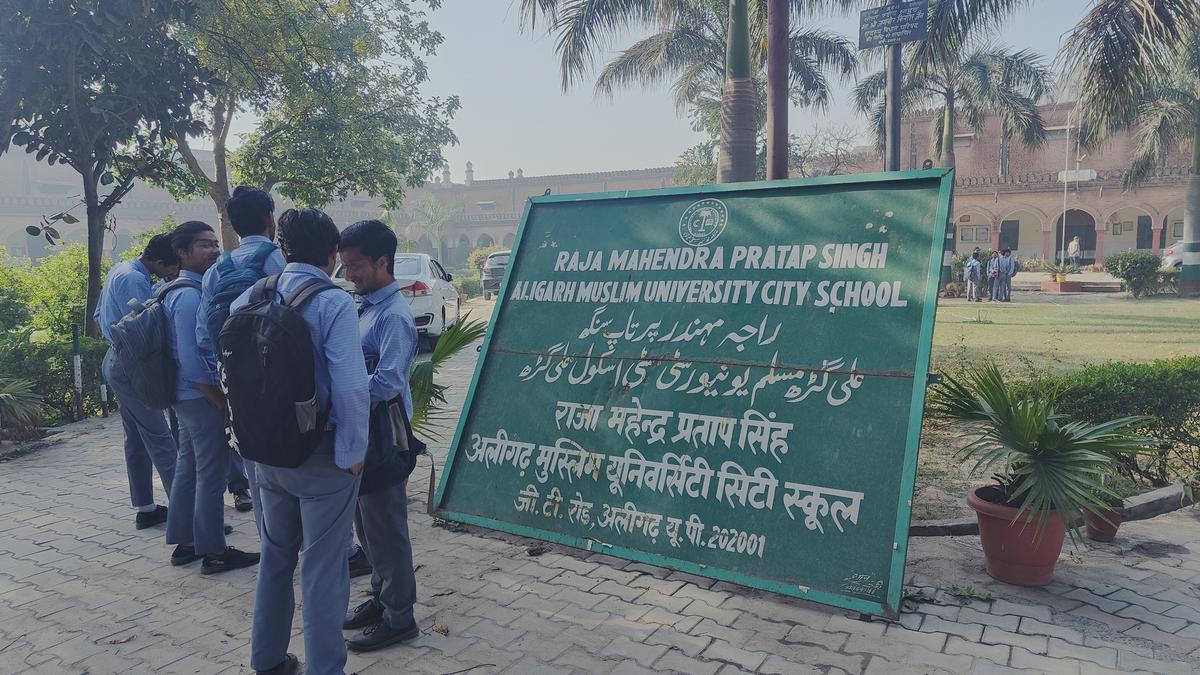
In the city of locks, Urdu as the key to a brighter future
The Hindu
Aligarh Muslim University: A hub for Urdu education, minority status challenged, offering opportunities to diverse students in India.
While students in the metropolitan cities seek to learn French, Spanish, and Japanese, young boys and girls in Aligarh aspire to tell their seen apart from sheen and qaaf from kaaf. In Aligarh, the city of locks, Urdu is an aspirational language that opens doors to affordable, quality education at Aligarh Muslim University (AMU), whose minority status was challenged in the Supreme Court earlier this year. The hearings concluded on February 1, following which the court reserved its verdict.
Established in 1920, the university has around 40,000 students, of which 30% are non-Muslims. According to sources, the number goes up to 40% in professional courses, particularly medicine and law. Urdu is a compulsory subject for all students till senior secondary. They have to pick between the combination of Advanced Hindi-Elementary Urdu and Advanced Urdu-Elementary Hindi.
At AMU’s Raja Mahendra Pratap Singh Senior Secondary School, Deepanshu Singh (name changed on request), a sixth-standard student, writes a sentence in Urdu to show his proficiency in the language. Deepanshu comes from a modest semi-urban household where nobody knows how to write Urdu in the Nastaliq script. He says he could not secure admission to the English-medium section, so he opted for the Urdu-medium section because his father wanted him to become an internal student of AMU.
The internal quota guarantees 50% seats to students from AMU-affiliated institutions, irrespective of religion, in all university programmes, including much sought-after professional courses like medicine, engineering, law, journalism, and management. Singh is not alone. There are many like him in the 10 schools run by the university.
Even as the BJP-ruled Centre has pleaded for the revocation of AMU’s minority status in the apex court, Uttar Pradesh Chief Minister Yogi Adityanath has often talked about the absence of SC/ST quota in the Central university. The party’s regional leaders have alleged discrimination against non-Muslim students and imposition of Urdu at AMU.
However, it is business as usual for Tripti Nagaich. A double MA in Urdu and Hindi, she runs a coaching centre in the heart of the city where she teaches Urdu to about 150 aspirants seeking admission to AMU. “The love for the language made me study it formally, but now it drives my career,” says the teacher. “Students don’t come to me for the love of Urdu poetry. They want admission in the university to get the tag of an internal student.” Nagaich teaches Hindi to the madrasa students who undertake a bridge course for formal education at AMU.
“There was a time when non-Muslims used to study only in the English-medium sections, but now the demand is such that they join the Urdu-medium sections as well. There are eight to 15 non-Muslim students in each section of the Urdu medium,” says Mohd. Fayyazuddin, vice principal of Raja Mahendra Pratap School, which was recently named after the freedom fighter who donated land for the institute. “There are no rigid compartments. The students in Urdu medium are allowed to write exams of other subjects in English. The certificate doesn’t mention the medium of instruction.”













